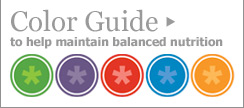Stage
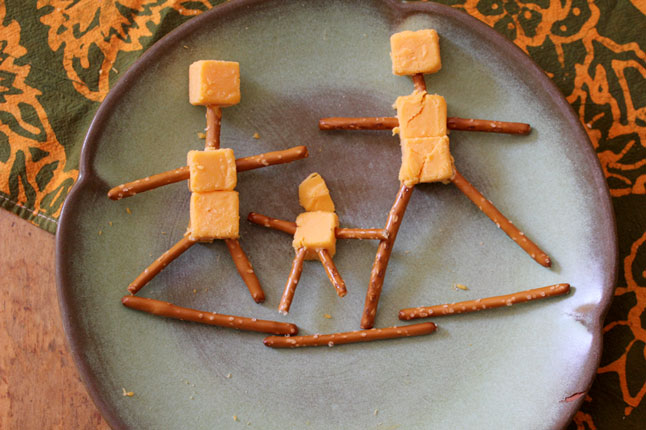
Have you ever had one of those days (or weeks) where your perfect little angel won’t eat any of the perfectly healthy foods that you have painstakingly made for them? Well, you are not alone! This is a very common concern among parents of toddlers and preschoolers, and here are a few fun food ideas that will help make foods disappear while incorporating learning activities, making you Mommy the Food Magician.
- Layering – Let your child build their own healthy pizza on a piece of whole wheat pita, making sure to have lots of different veggies to choose from. Demonstrate how to build a sliced mushroom tower or use thinly sliced red and green peppers to make a train track across the pita. Try the My Favorite Mini-Pizza recipe; it’s perfect for stage 4 toddlers.
- Building – Building can be a fun way to help kids focus on the foods in front of them during meal and snack time. Try giving your child a few pieces of pretzel sticks and some cheese cubes and show them how to build a stick man and then eat him. You’d be surprised how quickly the stick people disappear. Another fun building activity is creating fruit skewers. Chop several different types of fruits and let your child build their own perfect fruit skewer. I like to use plastic drink stirrer as they don’t usually have a sharp pointy tip. This is also a great way to get your toddler to try new fruits!
Building and layering are entertaining and effective fine motor skill development activities for toddlers. Although playing with one’s food creates a slight mess, it is worth the time in clean up to see your child enjoying meals that also incorporates a fun learning activity.
Another favorite food activity of mine for children who are a little bit older (around preschool to kindergarten) is making food patterns. Children of this age are often just learning to recreate patterns. For example, take a plastic drink stirrer and make a simple pattern of fruit by layering a slice of banana, followed by a piece of strawberry. Have your child repeat the pattern and watch as your little one quickly picks up this new skill through play and then goes on to devour the tasty fruit.
Presenting food to picky eaters can be discouraging, but don’t lose hope. Try one of these building or stacking activities this week for a change of pace and a new way to introduce a few healthy foods to your family.
Stage 1 + 2
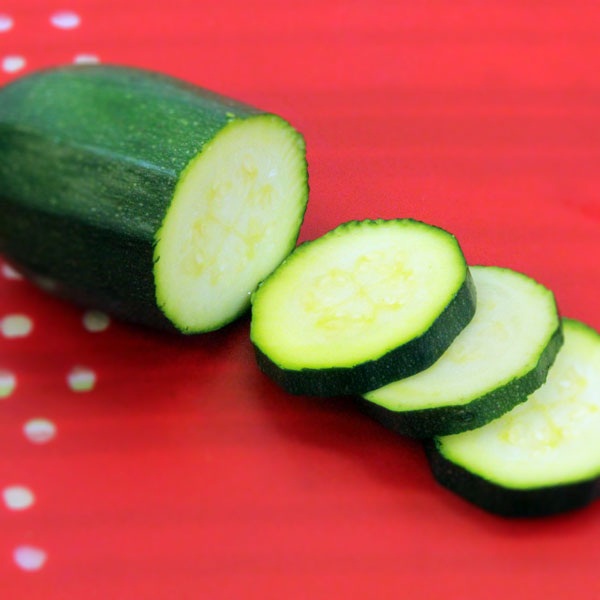
A yummy source of potassium and magnesium, zucchini is easy to prepare and keeps well.
The ratio of raw to steamed vegetables is 1:1. One cup of raw veggies will make approximately one cup of puree.
Thoroughly wash the zucchini and cut it into slices or chunks. Boil or steam until soft. Cool slightly and then using your immersion blender, blend to puree, adding breast milk or water to thin to the desired consistency.
For Stages 3 and 4, cut the raw zucchini into pieces sized for little fingers to pick up easily before steaming. Steam just until tender, and then cool slightly before serving.
After introducing zucchini, try summer squash. It can be prepared and served the same way.

Stage 4
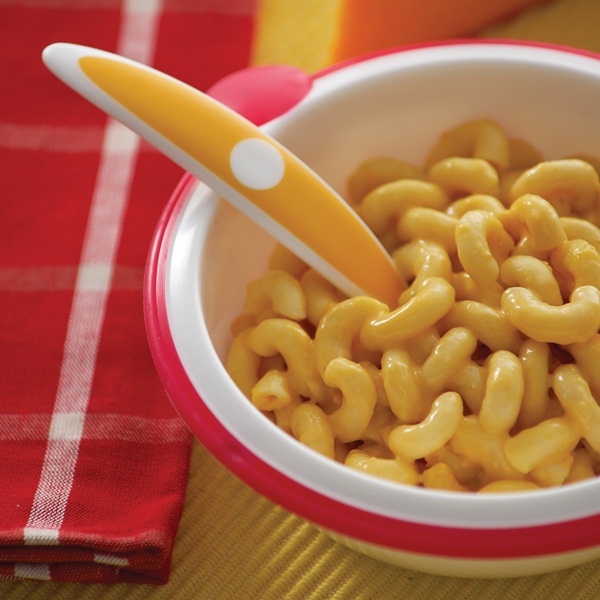
- 1/2c canned pumpkin
- 1/3 c pasta shells or elbow macaroni
- 1/2c 2% milk
- ½ c shredded Gouda cheese, mozzarella, or other melting cheese
- 1/2 c shredded cheddar cheese
- 2 Tbsp Parmesan cheese
In medium saucepan over medium heat, mix milk and cheeses, stirring continuously until cheese has melted. Add in pumpkin and blend. Mixture should be smooth. Meanwhile cook pasta following package directions PLUS 3-4 extra minutes, until pasta is very soft. Drain pasta. Add pasta to cheese sauce and stir until pasta is well coated. Use masher to mash Mac & Cheese to smoother consistency, if needed.
Stage 1 + 2
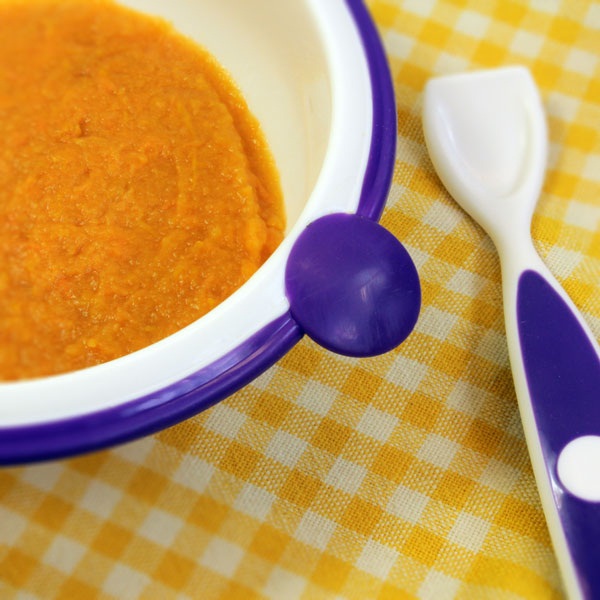
Sweet potato is an excellent source of potassium, and contains magnesium, and calcium. They also contain vitamins A, C niacin, and folic acid.
The ratio of raw to steamed potato is 1:1. One cup of raw potato will make approximately one cup of puree.
Peel the sweet potato and cut it into chunks. Boil or steam the chunks. Cool slightly and then blend with immersion blender. Add breast milk or water to thin the puree to the desired consistency.

Stage 1 + 2
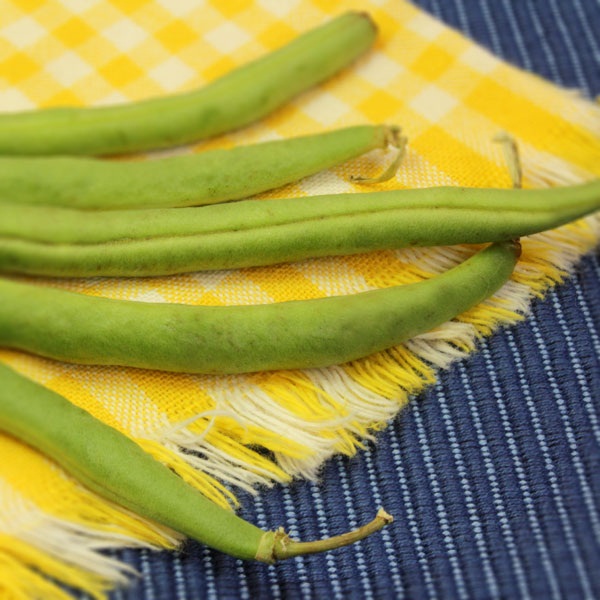
Green beans are an excellent source of potassium and folic acid.
The ratio of raw to steamed green beans remains the same. 1 cup of raw green beans will make approximately 1 cup of puree.
Cut washed green beans into small pieces and steam. Cool slightly and then blend with immersion blender. Add breast milk or water to thin the puree to the desired consistency.

Stage 1 + 2
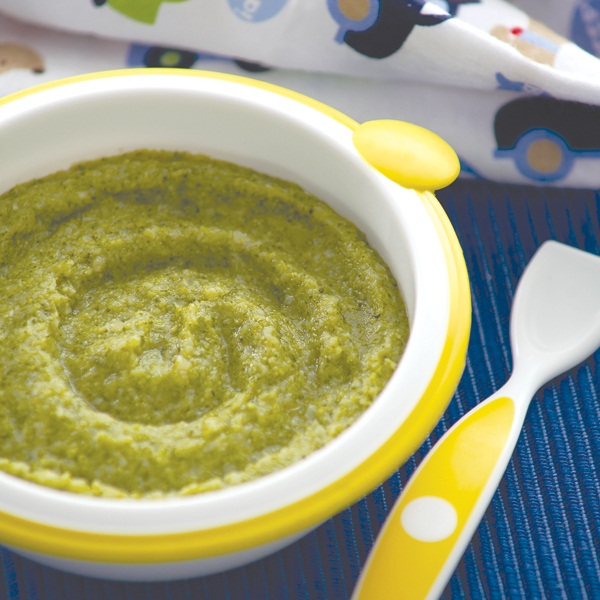
Broccoli contains potassium, phosphorus, magnesium and calcium. It also contains vitamins C, niacin, and folic acid.
1 full stalk of broccoli will make approximately ½ to ¾ cups of puree.
Wash in cold water. Break the broccoli into florets and remove the leaves and most of the thick parts of the stems. Boil or steam the florets. Cool slightly and then blend with immersion blender. Add breast milk or water to thin the puree to the desired consistency.

Stage 5
- 1 8oz box of frozen spinach
- 1/2 cup breadcrumbs
- 2 egg whites lightly beaten
Beat 2 egg whites. Drain spinach and squeeze as much water out as possible. Put spinach into a mixing bowl. Add breadcrumbs and mix. Fold in 2 egg whites and mix until ingredients become dough-like. Pat dough on cutting board until flat. Cut into shapes of your choice. Bake at 350 degrees for 10-15 minutes until golden brown.
Stage 1 + 2
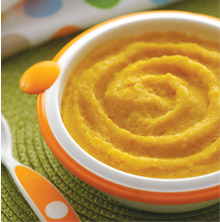
Winter Squash is an excellent source of magnesium and contains calcium, iron, and potassium. It also contains vitamins A, C, niacin and folic acid.
Peel the squash. Scoop out the seeds and cut it into chunks. Boil or steam the squash chunks. Cool slightly and then blend with immersion blender. Add breast milk or water to thin the puree to the desired consistency.








